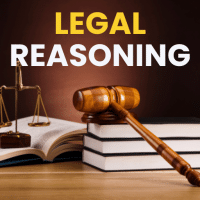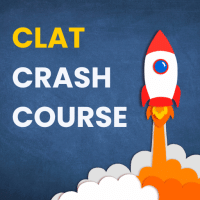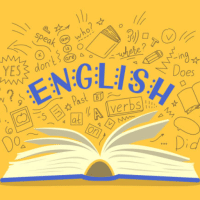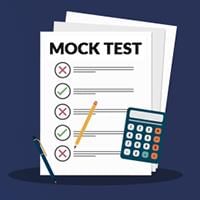CLAT Exam > CLAT Questions > Which of the following sessions is scheduled ...
Start Learning for Free
Which of the following sessions is scheduled for the first day of the meeting?
- a)Regional Workshop on GNSS-CORS Network
- b)Seminar on Integrated Geospatial Information Framework
- c)Focus on Cadastral & Land Management
- d)Discussion on Geospatial Technologies in Education
Correct answer is option 'C'. Can you explain this answer?
Verified Answer
Which of the following sessions is scheduled for the first day of the ...
The first day of the meeting will focus on "Cadastral & Land Management" and "Integration of Geospatial & Statistical Information." These sessions are designed to enhance understanding and application of geospatial data specifically in the managing land resources. Cadastral systems are essential for defining property boundaries and rights, which are critical for effective land use and planning. An additional fact is that effective land management using geospatial data can lead to improved governance, better resource allocation, and enhanced economic development in various regions.
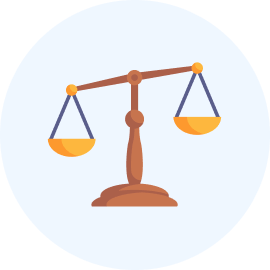
|
Explore Courses for CLAT exam
|

|
Similar CLAT Doubts
Question Description
Which of the following sessions is scheduled for the first day of the meeting?a)Regional Workshop on GNSS-CORS Networkb)Seminar on Integrated Geospatial Information Frameworkc)Focus on Cadastral & Land Managementd)Discussion on Geospatial Technologies in EducationCorrect answer is option 'C'. Can you explain this answer? for CLAT 2025 is part of CLAT preparation. The Question and answers have been prepared according to the CLAT exam syllabus. Information about Which of the following sessions is scheduled for the first day of the meeting?a)Regional Workshop on GNSS-CORS Networkb)Seminar on Integrated Geospatial Information Frameworkc)Focus on Cadastral & Land Managementd)Discussion on Geospatial Technologies in EducationCorrect answer is option 'C'. Can you explain this answer? covers all topics & solutions for CLAT 2025 Exam. Find important definitions, questions, meanings, examples, exercises and tests below for Which of the following sessions is scheduled for the first day of the meeting?a)Regional Workshop on GNSS-CORS Networkb)Seminar on Integrated Geospatial Information Frameworkc)Focus on Cadastral & Land Managementd)Discussion on Geospatial Technologies in EducationCorrect answer is option 'C'. Can you explain this answer?.
Which of the following sessions is scheduled for the first day of the meeting?a)Regional Workshop on GNSS-CORS Networkb)Seminar on Integrated Geospatial Information Frameworkc)Focus on Cadastral & Land Managementd)Discussion on Geospatial Technologies in EducationCorrect answer is option 'C'. Can you explain this answer? for CLAT 2025 is part of CLAT preparation. The Question and answers have been prepared according to the CLAT exam syllabus. Information about Which of the following sessions is scheduled for the first day of the meeting?a)Regional Workshop on GNSS-CORS Networkb)Seminar on Integrated Geospatial Information Frameworkc)Focus on Cadastral & Land Managementd)Discussion on Geospatial Technologies in EducationCorrect answer is option 'C'. Can you explain this answer? covers all topics & solutions for CLAT 2025 Exam. Find important definitions, questions, meanings, examples, exercises and tests below for Which of the following sessions is scheduled for the first day of the meeting?a)Regional Workshop on GNSS-CORS Networkb)Seminar on Integrated Geospatial Information Frameworkc)Focus on Cadastral & Land Managementd)Discussion on Geospatial Technologies in EducationCorrect answer is option 'C'. Can you explain this answer?.
Solutions for Which of the following sessions is scheduled for the first day of the meeting?a)Regional Workshop on GNSS-CORS Networkb)Seminar on Integrated Geospatial Information Frameworkc)Focus on Cadastral & Land Managementd)Discussion on Geospatial Technologies in EducationCorrect answer is option 'C'. Can you explain this answer? in English & in Hindi are available as part of our courses for CLAT.
Download more important topics, notes, lectures and mock test series for CLAT Exam by signing up for free.
Here you can find the meaning of Which of the following sessions is scheduled for the first day of the meeting?a)Regional Workshop on GNSS-CORS Networkb)Seminar on Integrated Geospatial Information Frameworkc)Focus on Cadastral & Land Managementd)Discussion on Geospatial Technologies in EducationCorrect answer is option 'C'. Can you explain this answer? defined & explained in the simplest way possible. Besides giving the explanation of
Which of the following sessions is scheduled for the first day of the meeting?a)Regional Workshop on GNSS-CORS Networkb)Seminar on Integrated Geospatial Information Frameworkc)Focus on Cadastral & Land Managementd)Discussion on Geospatial Technologies in EducationCorrect answer is option 'C'. Can you explain this answer?, a detailed solution for Which of the following sessions is scheduled for the first day of the meeting?a)Regional Workshop on GNSS-CORS Networkb)Seminar on Integrated Geospatial Information Frameworkc)Focus on Cadastral & Land Managementd)Discussion on Geospatial Technologies in EducationCorrect answer is option 'C'. Can you explain this answer? has been provided alongside types of Which of the following sessions is scheduled for the first day of the meeting?a)Regional Workshop on GNSS-CORS Networkb)Seminar on Integrated Geospatial Information Frameworkc)Focus on Cadastral & Land Managementd)Discussion on Geospatial Technologies in EducationCorrect answer is option 'C'. Can you explain this answer? theory, EduRev gives you an
ample number of questions to practice Which of the following sessions is scheduled for the first day of the meeting?a)Regional Workshop on GNSS-CORS Networkb)Seminar on Integrated Geospatial Information Frameworkc)Focus on Cadastral & Land Managementd)Discussion on Geospatial Technologies in EducationCorrect answer is option 'C'. Can you explain this answer? tests, examples and also practice CLAT tests.

|
Explore Courses for CLAT exam
|

|
Signup to solve all Doubts
Signup to see your scores go up within 7 days! Learn & Practice with 1000+ FREE Notes, Videos & Tests.



